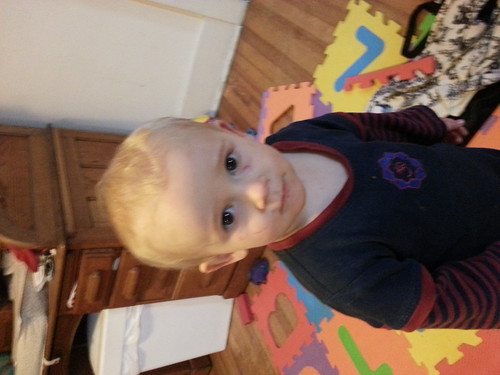Tuesday, December 25, 2012
Saturday, August 7, 2010
Moderation? Hunh??
"Just because you like chocolate cake, doesn't mean that you eat it everyday." - Plastikman
"Everything in moderation." - Socrates
"Everything in moderation, including moderation." - Steinman
"Everything in excess! To enjoy the flavor of life, take big bites. Moderation is for monks." - Heinlein
Tuesday, December 23, 2008
How the Fed. Gov. can use social web
Friday, December 5, 2008
World's oldest pot stash found in NE China - 2700 years old
Sunday, November 23, 2008
set for the Slog Strangercrombie calendar photo
Thursday, November 20, 2008
Features that should be in the T-Mobile Account Management app
Tim O'Reilly has some good points on his recent Radar posting about the voice-activated Google Search for iPhone that I think are relevent here:
Put these two trends together, and we can imagine the future of mobile: a sensor-rich device with applications that use those sensors both to feed and interact with cloud services. The location sensor knows you're here so you don't need to tell the map server where to start; the microphone knows the sound of your voice, so it unlocks your private data in the cloud; the camera images an object or a person, sends it to a remote application that recognizes it, and retrieves relevant data. All of these things already exist in scattered applications, but eventually, they will be the new normal.
What I wanted to point out is that here is an opportunity to allow the Contacts manager on the phone to integrate w/ my T-Mobile call records, and the ability to use voice or PIN and device ID to unlock access to T-Mobile billing information. Integrating my T-Mobile call records with my Google Contacts to annotate my calling and texting history would be pretty sweet.
The rest of the features mentioned here are kinda no-brainers:
Pay bill and/or add money to FlexPay,
Viewing and changing billing and account information,
View and manage all aspects of family plans,
Viewing current and past bills,
Review and change plans,
review, browse, and change add-ons like insurance, SMS bundles, etc,
search and datamine call records with smart recommendations for changing myFaves contacts,
VIew current voice, SMS, and data usage.
Browse and order accessories,
GUI for voicemail management (tied into Google Contacts)
My review of the G1, one month in
It's also beta. If you are OK with being an early adopter and want in
on the new OS, go for it. It has lots of cool features and I predict
that Android will be on as many devices as Windows Mobile or iPhone by
mid 2010. This device lives and breathes in the open source dev
community. If you want a mature device, go for iPhone until a few
more Android devices are out there and the dev community has had time
to add more functionality, stability, and features.
More in depth:
Pros: It's basically an ultra mobile computer with phone features.
It's a general all-purpose connectivity device, and leverages cloud
computing/software as a service better than any other device on the
market for the forseeable future.
Google Apps: Syncs effortlessly over-the-air with GMail, Google
Calendar, Google Talk, Google Contacts. I love being able to chat
using Google Talk wherever I am. I love having my entire Google
Calendar with me at all times, and being able to add events to any
calendar on the move. I love being able to edit my contacts on a PC
and having those changes on the phone immediately with no wires. It
has GPS and native Google Maps, which I already use a whole lot, and
ties in with the phone's compass and GMaps' StreetView. There's no
need for an extra app to sync your device to your PC ala iTunes or
Windows Mobile's ActiveSync, and all firmware upgrades are done
over-the-air as well. The GMail app is far better than what's out
there for Windows Mobile or the mobile browser version of GMail.
Media: It mounts as a USB device for moving music, pics, and movies on
and off of it. (Windows Media Player recognizes it and will set up
music syncing if you want, or you can drag and drop from iTunes.
Winamp works flawlessly with it, too.) There are already streaming
music apps (a LastFM player and an imeem player), as well as a custom
YouTube app that doubles as the native video player. The browser is
smart and has an equivalent to tabs so you can surf multiple sites (I
use this a ton). Surfing using T-Mobile's 3G is fast, and surfing
using wifi is, well, as good as your wifi signal. The native music
player is simple and easy to use.
Camera: Easy to use, 2 megapixels, auto focus. Extremely simple,
stores photos to your microSD card, natively allows for sending pics
via MMS or GMail.
The keyboard is awesome and well laid out, especially compared to
WinMo phones, and you can make keyboard shortcuts. You can make
shortcuts to anything (I have shortcuts to txt and call Carrie, for
instance) and put them on the home screen, which is big and allows
folders. It makes good use of screen real estate with a pulldown
motif, and there are actually three home screens. Volume management
is smart, unlike the Windows Mobile device I was using before this, in
that it knows when you're adjusting ringer volume vs when you're
adjusting music volume. It works like you expect it to. The built-in
alarm clock is feature rich and very expandable so you can have as
many alarms as you need and it handles repeating events really, really
well.
The phone functions themselves are what you'd expect, with
speakerphone, three-way calling, mute, hold, etc. It also allows for
custom call routing (send calls from this number straight to
voicemail, use this ringtone for this other person, etc). Another
neat feature is that it translates the number and alpha characters for
you, so if you are trying to dial 1-800-TranceDJ you can enter those
on the keyboard without needing the traditional nine-key map found on
all phones for the last century (something smartphones tend to fuck
up. I'm looking at you, WinMo!)
3rd Party apps; There are lots of apps in the Market already (over 70
and counting) and everything on the Market is free for the first 90
days or something like that. The Market is simple to use, and there
are ways to install new apps without using the Market as well. It
uses a microSD card for most of the storage, which means the storage
is cheaply expandable and can go as high as 32gb. Many of the apps
available for free are game-changers, ala wikitude, Zombie, Run!,
Parallel Kingdom, breadcrumbz, SkyMap, and other augmented reality
apps. The big deal is that you can run multiple apps at once, so you
can listen to music, run a GPS-enabled cardio trainer and play GPS/3G
games at the same time, which you can't do with iPhone. Once the
Market is opened up for devs to charge for their apps, I expect this
space to really blow up. Soon you will also be able to download new
widgets from the Market, further adding to the functionality of the
device.
Cons:
On the whole there's a general feel of "This is a beta device with
barebones features. The dev community will improve it over time with
their own apps if given the chance, so let's just get the device out
the door and let people play." This is both a good thing and a bad
thing.
Running lots of radio-intensive apps at once means that battery life
is teh sux. I have 5 possible charging stations (USB cables in car
and at work, car charger in Trucky, two AC chargers at home) and use
them whenever I can. Listening to music and using a GPS/3G app or two
will drain the battery in about 3 hrs.
Having multiple apps that control when wifi, GPS, and 3G radios are in
use causes conflict and make managing those functions harder than they
should be, and it is imperative that you manage them to conserve
battery life.
Google Contacts doesn't allow merging of duplicates, nor does it allow
you to create a contact with the same email addy or phone number as
another contact. If you have a contact with a phone number and
another with an email address, you have to manually merge and delete,
which can lead to data loss if you make a copy/paste typo.
The device is generally a bit underpowered, as I have to wait several
seconds for the home screen to redraw after exiting memory hungry apps
like YouTube, along with other general lagginess.
It's not so intuitive that I can hand the phone to a stranger to allow
them to make an emergency call without explaining how to do it. You
can't search contacts as easily as with WinMo with the native dialer
app. The screen display times out very quickly, so using an IVR
system is more frustrating than it should be.
There is no 3.5mm headphone jack, so you will have to buy a cheap
adapter if you want to use your cool headphones (I use this one:
http://bit.ly/f4DO). There is no A2DP bluetooth support as yet, which
means no stereo bluetooth headphones (though there have been many
assurances that this is coming with a firmware upgrade, the stack
wasn't stable enough for release with the phone).
There is no Pandora app for Android yet, and no scrobbling apps
either, not even with the LastFM player.
No Exchange, Notes, or Novell GroupWise support, if you care (I don't).
The 3G frequency band that T-Mobile uses is different than what AT&T
and other carriers use, so 3G won't work on other carriers, meaning
that jailbreaking it a lot less appealing.
Apps in the Market depend on YouTube-style comments for ratings, which
means lots of 'First!" comments and 5-star reviews by people who
haven't actually used the app. You only get 128mb of on-phone memory
to store your apps in, which means making the painful choice of which
apps to keep. With a new device and lots of free apps available, I've
hit this limit many times already.
The camera can't take video and has no manual controls. It's a point
and shoot. (not really any different than iPhone in that regard).
There are only 3 widgets available currently, and I found them all
useless (a clock, a Google Search bar, and a picture frame).
The vaunted smart memory allocator isn't as good as they say. There's
no native way to kill a process since you're not supposed to need to.
Android is supposed to be smart enough to take resources away from
apps you're not using, but I've found that over time the device gets
slower and slower, and a reboot fixes it. This will probably get
better with upgrades.

